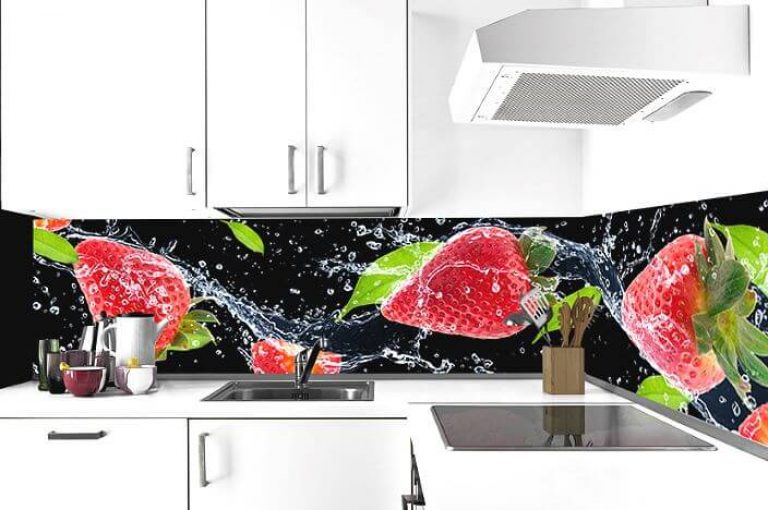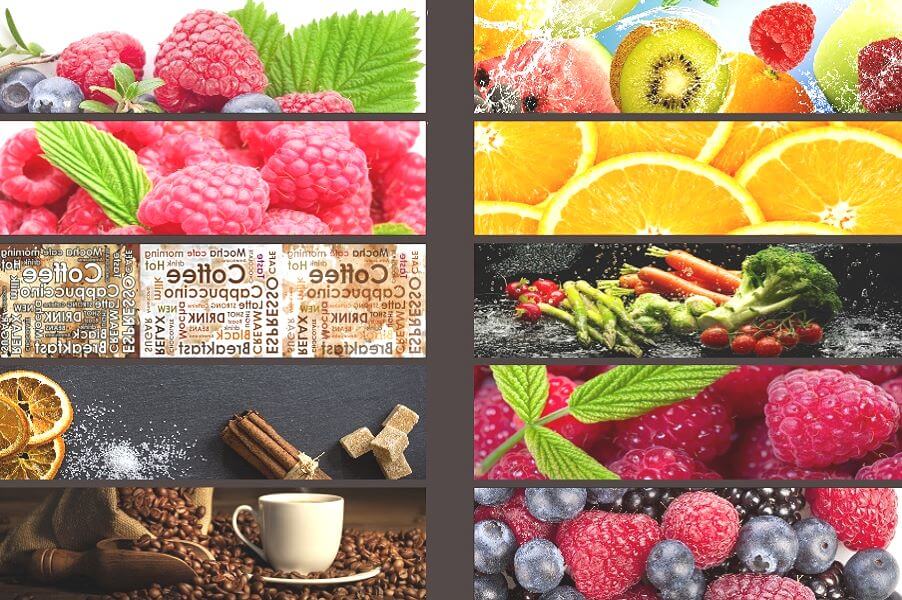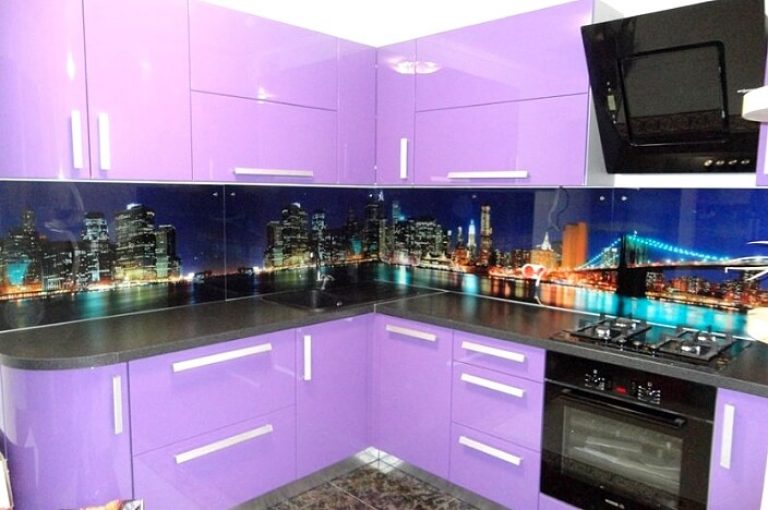Plastic kitchen apron - a quick transformation of your kitchen
A plastic kitchen apron is a real contender for more expensive options for finishing the part of the wall above the kitchen worktop. Like any other type of decorative finish, plastic has both advantages and disadvantages. What and why outweighs? The question of whether plastic finishing materials can be a worthy alternative to the same tile or glass is solved quite simply if we consider this material from all sides.
By itself, plastic, in comparison with its "older comrades", such as brick, tile or wood, is a rather young finishing material. But, despite his young age, he managed to win the favor of numerous owners of various housing: from small apartments to large private houses.
The most common plastic aprons for the kitchen today can be divided into three types:
- PVC panels- panels made of polyvinyl chloride, one of the types of plastic, which is particularly resistant to alkalis, various acids, solvents and mineral oils.
- PVC lining- decorative sheathing material made of polyvinyl chloride by analogy with natural wood clapboard, the main feature of which is a tongue-and-groove connection.
- ABS plastic panels– panels made of thermoplastic resin obtained by combining a copolymer A krylonitrile, B utadiene and WITH tyrol.
- Each of these options has its pros and cons, but they all share a comparative low cost with similar products and installation speed.
2. Advantages and disadvantages of plastic - myths and facts
A plastic PVC apron for the kitchen is the easiest and cheapest way to change its interior quickly and drastically.
Photo printing with the image of a fresh lime invigorates and stimulates the appetite
What are the advantages of PVC panel supporters:
- Low comparative cost. A product with dimensions of 200x60 cm costs from one thousand rubles;
- Ease of maintenance: simple, quick and easy to wash;
- High resistance to alkalis, acids, solvents and mineral oils;
- It does not burn in air, has frost resistance up to -15 °C, and heat resistance up to +70 °C.
- Quick do-it-yourself installation.

Strawberries are a frequent guest in thermal printing images
What critics or myths say about PVC panels:
- PVC apron for kitchen have to be changed every six months as it will be scratched and dull. This option is possible with indifferent, careless and incorrect handling of the panel. It is strictly forbidden to hit the panels with heavy objects, scratch with knives and forks, and try to set fire to it. In fact, there are two practical tips for not buying a new plastic backsplash several times a year. First tip: cover the entire surface of the apron with high-quality acrylic varnish (cost within 300 rubles). Second tip: directly behind the gas stove or electric hob, glue a glass of 4-6 mm thick on a transparent adhesive with a silicone base. After these steps, a new apron will serve for more than one year, unless of course you knock on it with a hammer;
- Dirt and grease, falling on the PVC product, dry out and it cannot be cleaned even with a hard brush. Of course, PVC is not a stone, much less a silicon agglomerate, but it is not recommended to clean not only plastic, but also many types of ceramic tiles with a stiff brush!
- It is said that such materials cannot be cleaned with household chemicals. Of course you can! You just need to do this wisely, without spraying the surface with anything. If you have not followed the two previous tips, then use special PVC cleaning products, those that are used to clean plastic windows are also suitable;
- The process of removing the old apron is long and difficult.. This option is possible provided that from all the options you have chosen liquid nails for its fastening and at the same time, unknowingly, have used up a whole package of glue;
- PVC apron in the kitchen unhealthy as when heated, substances that are not safe for humans are released. Of course, such a situation is also possible, which is why, when purchasing a plastic panel, be guided not only by the price, but also by the manufacturer and the seller's certificate of conformity. PVC is used in clothing, as a coating on washable wallpaper, as a sealant in refrigerators, and even to make condoms for people who are allergic to latex.
- Constant exposure to sunlight causes the product to fade.. Indeed, such a situation can lead to photodegradation, a condition when the plastic loses its strength, elasticity and color. That is why light-absorbing dyes are used in high-quality products.



Variants of images applied to kitchen plastic panels
Solid PVC lining has all the advantages of the panels, but the small wall thickness of the product makes it not resistant to accidental mechanical damage. In addition, the presence of additional compounds and the unevenness of the surface relief makes it difficult to keep it clean. However, this option has the right to exist in the kitchen, as a quick and cheap way to give a fresh look to the wall. Certainly, it is not recommended to use lining directly on the wall above the hob.
Pros and cons of ABS panels
ABS (ABS)(A krylonitrile, B utadiene, WITH tyrol) plastic is more resistant than PVC, a material that is characterized by a number of positive qualities:
- Low comparative cost. It is the same or slightly higher than that of PVC models;
- Non-toxic when used in normal temperature conditions;
- 100% moisture resistance;
- High resistance to acids, oils, household detergents and alkalis;
- Long service life in the absence of direct sunlight;
- High heat resistance (over 110°C)
- Sufficiently large operational corridor (from -40 °C to +90 °C).
The disadvantages of this material, of course, also exist:
- Most often it has a slightly yellowish tint, although there is also a transparent version of this material - MABS;
- Under targeted exposure to ultraviolet light, it is subject to photodegradation: it fades and gradually becomes less resistant;
- The resistance of the material to natural abrasion is lower than that of glass or tiles.

The image of the night city is a favorite plot of photo printing
3. How to fix a plastic apron in the kitchen?
There are several common ways to mount a plastic apron on a wall. The choice of a particular option depends on the surface of the wall, its material and evenness.
Mounting with adhesive on the wall surface is the fastest way
Indeed it is, installing an apron by gluing it to the wall surface - the fastest way installation. However, an indispensable condition should be the evenness of the wall surface. A sticker on oil paint or tile is possible. You should not waste glue unnecessarily, otherwise, when replacing the panel in the future, you will have to make quite a few efforts to dismantle it. Glue is applied around the perimeter of the product, without gaps.
Installation using dowel nails or self-tapping screws on the wall surface
Of course, this method can be applied. It will take more time than the glue option, but when replacing the panel, it will make it faster and more relaxed. Drill or screwdriver required. The wall must be level. Drilling is carried out around the perimeter of the apron at regular intervals at a distance of 20 - 30 cm. If the wall is made of plaster or foam blocks, it is possible to mount on wood screws.
Installation with glue or self-tapping screws on a wooden crate
Another common way to attach a plastic kitchen apron. This option is used to level the surface of the wall. The thickness of wooden planks during leveling should be minimal, such that it allows you to level the plane horizontally and vertically, no more.
Mounting the apron on the crate is done using glue or wood screws. The lower part with visible screw heads is covered with a plinth, and the heads of the remaining self-tapping screws are closed with special decorative caps.

What do we end up with? After reading the above information, you probably decided whether or not you are ready to use plastic as a wall decoration above the kitchen worktop. However, despite the absolute possibility of such an application, consider using other, more resistant materials. For example, you certainly can. The effect will be the same, but the benefits are undoubtedly greater.




